<< Previous | Displaying results 5121-5130 of 6772 for "" | Next >>
View of a ceremony held during the Museum's Tribute to Holocaust Survivors: Reunion of a Special Family, one of the United States Holocaust Museum's tenth anniversary events. Flags of the liberating divisions form the backdrop to the ceremony. Washington, DC, November 2003.

Scene during the 2001 Days of Remembrance ceremony, in the Rotunda of the US Capitol. Flags of the liberating divisions feature prominently in the Museum's Days of Remembrance ceremonies. Washington, DC, 2001.

Insignia of the 65th Infantry Division. The 65th Infantry Division was nicknamed the "Battle Axe" after the divisional insignia, a halbert (an axe on a pole), used to cut through the enemy during medieval times.

Insignia of the 45th Infantry Division. The 45th Infantry Division gained its nickname, "Thunderbird" division, from the gold thunderbird. This Native American symbol became the division's insignia in 1939. It replaced another previously used Native American symbol, a swastika, that was withdrawn when it became closely associated with the Nazi Party.
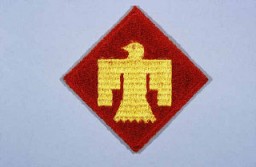
Insignia of the 42nd Infantry Division. The nickname of the 42nd Infantry Division, the "Rainbow" division, reflects the composition of the division during World War I. The division was drawn from the National Guards of 26 states and the District of Columbia. It represented a cross section of the American people, as the rainbow represents a cross section of colors.
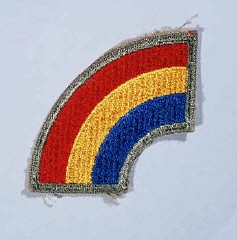
Insignia of the 36th Infantry Division. The 36th Infantry Division, the "Texas" division, was raised from National Guard units from Texas and Oklahoma during World War I. The "T" in the division's insignia represents Texas, the arrowhead Oklahoma. The division was also sometimes called the "Lone Star" division, again symbolizing its Texas roots.
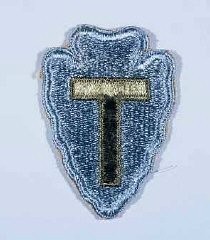
Insignia of the 29th Infantry Division. "Blue and Gray" was coined as the nickname of the 29th Infantry Division by the division's commander during World War I. The name commemorates the lineage of the mid-Atlantic states' National Guard units that formed the division, many with service on both sides during the Civil War.

Insignia of the 69th Infantry Division. The 69th Infantry Division gained the nickname the "Fighting 69th" during World War II. The name has no heraldic significance, but simply conveys the esprit de corps of the division.
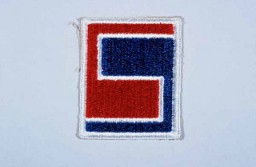
Insignia of the 71st Infantry Division. The nickname of the 71st Infantry Division, the "Red Circle" division, is based upon the divisional insignia (which includes a red circle).
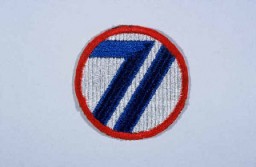
Medical corpsmen of the US 71st Infantry Division, 3rd US Army look on as captured German soldiers remove bodies from inside a barracks in Gunskirchen. In the foreground, a Jewish girl lies huddled in the straw on the floor of the barracks. Gunskirchen, Austria, May 7, 1945.
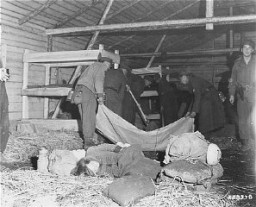
We would like to thank Crown Family Philanthropies, Abe and Ida Cooper Foundation, the Claims Conference, EVZ, and BMF for supporting the ongoing work to create content and resources for the Holocaust Encyclopedia. View the list of donor acknowledgement.